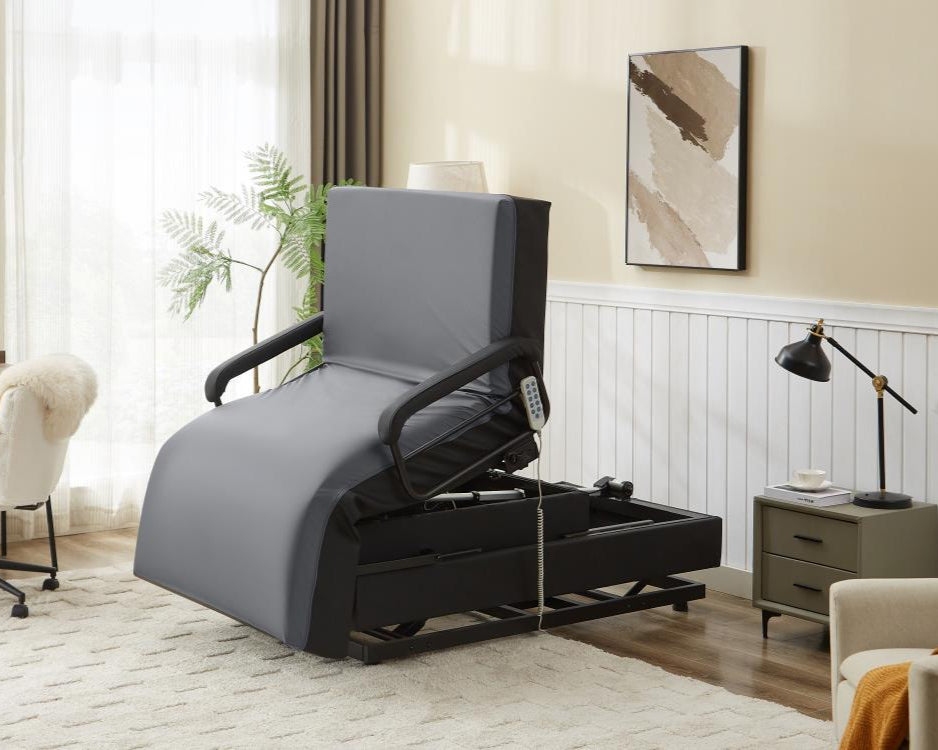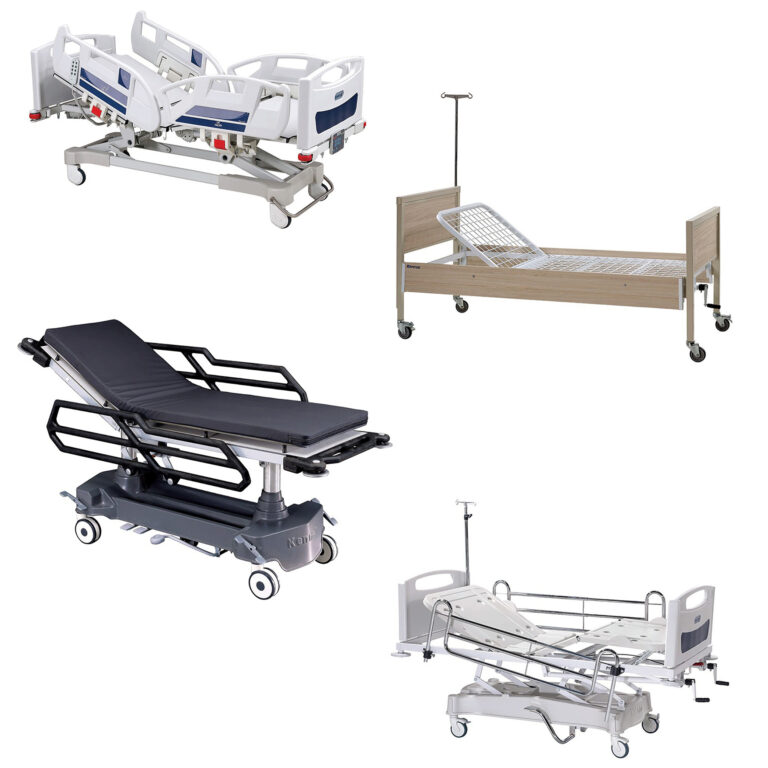The 9-Second Trick For Hospital Beds For Home Use
Table of ContentsHospital Beds For Home Use - An OverviewGetting The Hospital Beds For Home Use To WorkSee This Report on Hospital Beds For Home UseThings about Hospital Beds For Home UseUnknown Facts About Hospital Beds For Home UseExcitement About Hospital Beds For Home UseExamine This Report about Hospital Beds For Home Use
There are 3 main kinds of healthcare facility beds: guidebook, semi-electric, and fully-electric. More types of clinical beds exist and they are detailed below. These beds use hand cranks to adjust the bed's height and increase and decrease the head and the foot. Hand cranks are generally discovered at the foot of the bed and call for an individual that is literally efficient in operating.
Semi-electric beds have an electrical motor to raise and lower the head and foot sections of the bed. Patients and caretakers readjust the placing by pushing buttons utilizing a hand pendant. The height of the bed is readjusted by hand with a hand crank. Full-electric beds have an electrical motor that can increase the head and foot sections of the bed as well as the entire elevation and positioning of the bed.
Examine This Report about Hospital Beds For Home Use
There are numerous types of health center beds, each developed to meet certain individual demands. Here are some typical kinds: This is the most typical kind of health center bed, made for general medical usage.
Lower to the ground than a conventional bed. This kind of bed is made for larger patients, with a larger framework and greater weight capability than a typical bed.
This kind of bed is designed for critically ill clients who need open tracking and specialized medical devices such as ventilators and infusion pumps. This type of bed is created for usage throughout labor and shipment, with adjustable settings and functions to support the mother and infant throughout the birth process.
Facts About Hospital Beds For Home Use Revealed
Multiple feature and the accessories carry out expanding grip to various parts of the vertebra and the extremities without relocating the human body. These are just a couple of examples of the kinds of health center beds offered. The particular kind of bed utilized will rely on the client's condition, clinical needs, and various other elements.
Here is the point you need to recognize. A one-function medical facility bed is a clinical bed that enables a patient to relocate just the head or foot section up or down. A 2 feature healthcare facility bed generally describes a kind of medical bed that has two adjustable features to help people in healthcare facilities or care centers.

Hospital Beds For Home Use Fundamentals Explained
A 7-function ICU bed is a kind of clinical bed that provides several adjustable functions to support critically ill clients in a critical care unit (ICU) (hospital check my source beds for home use). The 7 features commonly consist of: Back-rest change: The back-rest can be gotten used to various angles to help the patient stay up or rest pleasantly
Elevation change: The bed can be elevated or decreased to make it less complicated for people to enter and out of bed, and for caretakers to supply treatment. Trendelenburg setting: The entire bed can be tilted to advertise blood circulation and blood circulation in the body. Reverse Trendelenburg placement: The bed can likewise be tilted in the opposite instructions to advertise blood flow and flow in the upper body.
While even more budget friendly than electrical designs, these beds require physical initiative for adjustments. The main benefits of hands-on beds are their cost and reliability, as they do not rely upon electrical power. The demand for manual initiative can be a restriction in scenarios where quick adjustments are needed or where caretakers encounter physical difficulties.
The Of Hospital Beds For Home Use
They are fit for patients who require minimal rearranging for comfort or clinical needs. Semi-electric medical facility beds provide an equilibrium of guidebook and electric controls. The head and foot sections are commonly adjusted with electric controls, while the height is changed by hand. These beds give a perfect middle ground in between guidebook and totally electrical alternatives, offering ease of use without the full cost of electric designs.
Semi-electric beds are well-suited for clients who need moderate changes to the head and foot areas yet can handle without regular height changes. This makes them an affordable solution for those looking for convenience and comfort without the requirement for constant repositioning. Fully electrical health center beds include electrical controls for smooth changes to the height, head, and foot sections.
Specialty healthcare facility beds, such as ICU beds, long-term care beds, and bariatric beds, are meticulously created to resolve certain medical needs. These beds supply customized take care of varied individual groups, boosting both results and comfort. In the adhering to sections, we will certainly check out the primary types of specialized healthcare facility beds, describing their specific advantages and applications.
With years visit here of experience in manufacturing electrical linear actuators - hospital beds for home use and close cooperation with the healthcare sector, TiMOTION is well-positioned to offer dependable medical care services. Our up and down integrated business manages every action of the production process, from layout to actuator assembly, guaranteeing we deliver outstanding value and personalized solutions tailored to your details needs
The Basic Principles Of Hospital Beds For Home Use

To read more concerning incorporating these modern technologies into your items, contact us today. More reading:.
Information is sourced from the Medicare Cost Report.

4 Easy Facts About Hospital Beds For Home Use Shown
A medical facility bed is a bed developed particularly for medical purposes. It is not only an area for clients to rest, but also a system for clinical operations. Unlike common home beds, healthcare facility beds normally have adjustable features, which can facilitate clinical personnel to make various adjustments according to the demands of people, such as altering the height, disposition, and assistance angle of the back and legs of the bed.